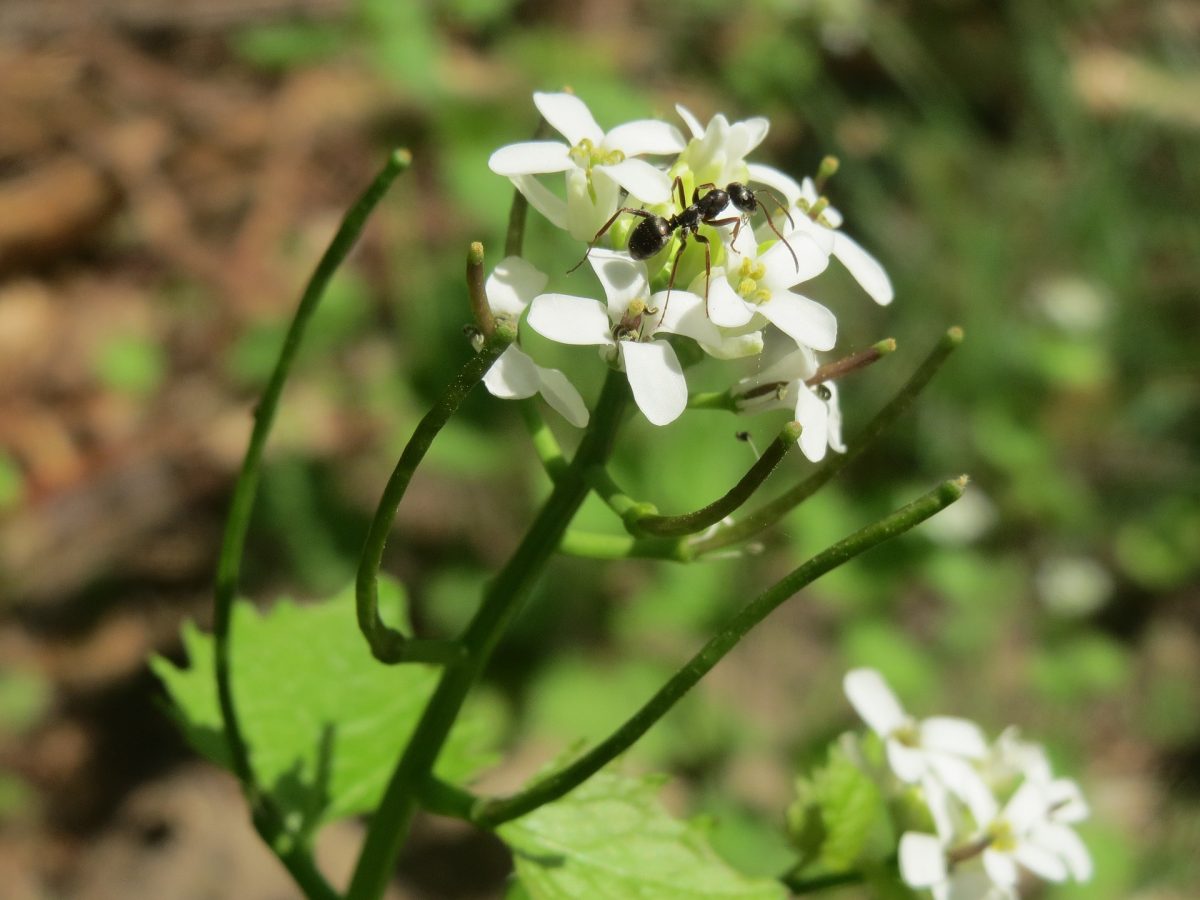Garlic Mustard is an invasive herb native to Europe. It’s been present in North America since the 1800s.
Garlic Mustard spreads quickly and crowds out native plants. It also releases chemicals from its roots that can change soil chemistry. The loss of native plants reduces the biodiversity of an area. This results in reduced ecosystem health and less resilience to environmental change.
What it looks like

| Form | A small non-woody plant that grows as a ring of short leaves in its first year before growing up to 1 metre tall in its second year. |
|---|---|
| Habitat | Often found in disturbed areas such as roadsides, gardens and forest edges. |
| Leaves | Green, kidney-shaped, serrated and alternating on the stem. Leaves have a strong garlic smell when crushed. |
| Flowers | Small and white with 4 petals each. |
| Fruit | Produces long upward-angled pods that dry out in the fall and open to spread seeds. |
| Stem | Thin, lightly hairy, green stems grow up to 1 metre tall in their second year of growth. |
This plant looks similar to and may be confused with native Violet species.
How it spreads
Garlic Mustard spreads by seeds that fall close to the parent plant, but are also spread over long distances by humans, pets and wildlife. Seeds can be carried on items including boots, fur or clothing.
What you can do
Brush seeds off your shoes and pets before leaving a park or natural area to prevent transporting them to another location.
Report invasive Garlic Mustard plants found in City parks and natural areas. You can also apply to be a Garlic Mustard Task Force Volunteer.
Report invasive plant species Apply to volunteer
Remove invasive Garlic Mustard plants on your own property. Don’t compost any removed material, as seed pods can continue to develop after plants have been pulled. Place all removed materials in a dark plastic bag for one to two weeks in the sun to ensure the seeds are no longer viable, then dispose of it regularly with other garbage.